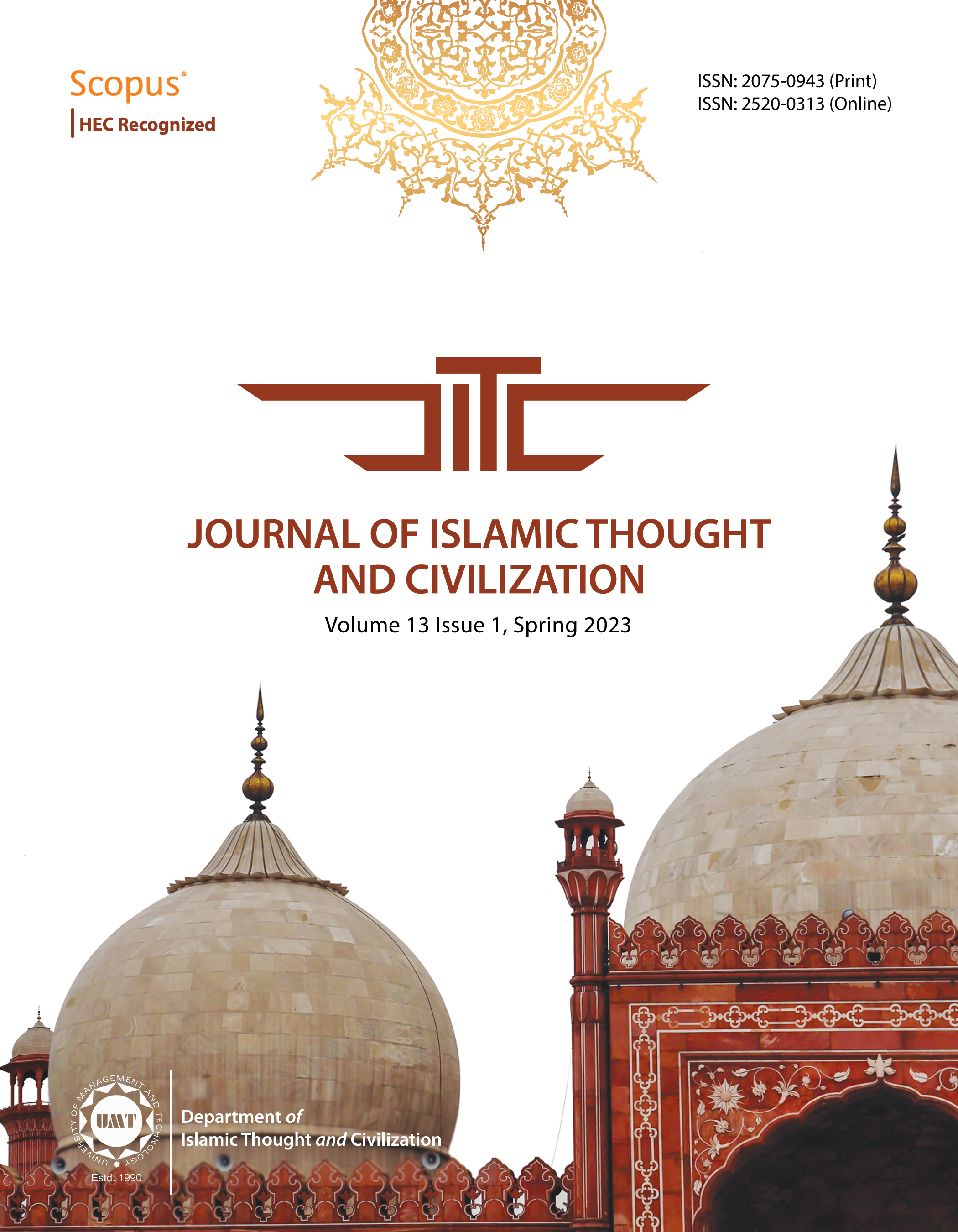Undermining the Familiar and Embodiment Content in Arabic Calligraphy
Abstract
 Abstract Views: 107
Abstract Views: 107
Contrary to deconstruction and its destructive pursuit, the concept of undermining the familiar seeks to refute the constants and its known limitations. It is done through the process of receiving and what is imposed by the formation of the word or text or the structural and design structure in general, along with the Arabic calligraphy in particular. This is based on the recipient's understanding and interpretation of the dual phenomenon and the content's manifestation. More accurately, the disclosure of its reality through its expressive phenomenology; for that sake, the research was devoted to studying “undermining the familiar and embodiment content in Arabic calligraphy” including four chapters. The first chapter comprised the methodological introduction, the second chapter dealt with the concept of undermining the familiar and its representations in Arabic calligraphy, and to embodiment the content along with its use in Arabic calligraphy. While, the third chapter represented the research procedures and the community reached (32) compositions, in which the analysis concluded several results. The fourth chapter clarified the most important concept. The sample calligraphers were able to focus on the design relationships of the theoretical framework. The current study acquainted with undermining the familiar and embodiment of the content for those concerned and interested in the art of Arabic calligraphy, it also focused to benefit from the energies of letters and their constructive movements in building, modernizing, and renewing the arts of Arabic calligraphy. Moreover, the research also suggested studying the design treatments in order to embody the content in the formations of Arabic calligraphy.
Downloads
References
Holy Qur’ān.
Asr, Hussein Abdul Bari. "Modern Trends in Teaching Arabic in the Preparatory and Secondary Levels." Alexandria Book Center, 2005.
Al-Attabi, Furat Jamal., Amin Abdel-Zahra Yassin, and Aram Mohamed Hussein. "Aesthetic and Artistic values of Textiles in the Islamic Era.. "Journal of the cCollege of Basic Education 28, no. 114 (2022): 78-92. DOI: https://doi.org/10.35950/cbej.v28i114.5390
Bozdoğan, Sibel., and Reşat Kasaba. Rethinking Modernity and National Identity in Turkey. Vol. 7, Washington: University of Washington Press, 1997.
de Beaugrande, Robert. "Cognitive Processes and Technical Writing: Developmental Foundations." Journal of Technical Writing and communication 12, no. 2 (1982): 121-45. DOI: https://doi.org/10.2190/F7PK-4KU1-PRVY-VRV9
Duncum, Paul. "Nine Reasons for the Continuing Use of an Aesthetic Discourse in Art Education." Art Education 60, no. 2 (2007): 46-51. DOI: https://doi.org/10.1080/00043125.2007.11651636
Freeland, Cynthia A. But Is It Art?: An Introduction to Art Theory. New York: Oxford University Press, 2001.
Graham, Gordon. Philosophy of the Arts: An Introduction to Aesthetics. Routledge, 2005.
Hassan, Furat Jamal., Xiang Yang Bian, and Xiao Yu Xin. "Artistic Influences Analysis of Iraqi National Costumes." Paper presented at the Advanced Materials Research, 2013. DOI: https://doi.org/10.4028/www.scientific.net/AMR.821-822.735
—. "Hijāb and Burqa in Islamic Fashion System." Al-Academy, no. 97 (2020).
—. "Achieving an Iraqi Model in Contemporary Fashion Design." Al-Academy, no. 88 (2018): 245-60.
Hidi, Suzanne E., and Angela Hildyard. "The Comparison of Oral and Written Productions in Two Discourse Types." Discourse processes 6, no. 2 (1983): 91-105. DOI: https://doi.org/10.1080/01638538309544557
Müller-Lauter, Wolfgang, and Robert Schacht. Nietzsche: His Philosophy of Contradictions and the Contradictions of His Philosophy. Vol. 22, Illinois: University of Illinois Press, 1999.
Nehamas, Alexander. Only a Promise of Happiness: The Place of Beauty in a World of Art. Princeton: Princeton University Press, 2007.
Reilly, Maura., and Linda Nochlin. Global Feminisms: New Directions in Contemporary Art. London: Merrell, 2007.
Rossetti, William Michael. Fine Art, Chiefly Contemporary. 1867.
Sibahi, Haider Kadim, and Furat Jamal Hassan. "Space Efficiency in the Arabic Calligraphy Panel.." Al-Academy, no. 104 (2022).
Smethurst, James. The Black Arts Movement: Literary Nationalism in the 1960s and 1970s. Carolina: Univ of North Carolina Press, 2006.
Swander, Mary., Anna Leahy, and Mary Cantrell. "Theories of Creativity and Creative Writing Pedagogy. The Handbook of Creative Writing 11 (2007).
Taylor, Brandon. Art Today. Laurence King; Prentice Hall, 2004.
Torma, MK. "Tour around the World of Art: An Art Historical Excursion in Berlin in 1919." Towards a Science of Art History: JJ Tikkanen and Art Historical Scholarship in Europe 38, no. 38 (2009): 84-93.
Watson, Jean. Art and Aesthetics in Nursing. Jones and Bartlett Learning, 1994.
Zahed Poor, Ali. "A Comparative Study of Books Related to Writing Instruction in Arabic Language and Subh Al-Asha." بحوث في اللغة العربية 5, no. 9 (2013): 69-90.
Copyright (c) 2023 Mohammed Radhee Ghadheb, Oday Abdulhameed Majeed

This work is licensed under a Creative Commons Attribution 4.0 International License.

This work is licensed under a Creative Commons Attribution 4.0 International License. Authors retain copyright and grant the journal right of first publication with the work simultaneously licensed under a Creative Commons Attribution (CC-BY) 4.0 License that allows others to share the work with an acknowledgement of the work’s authorship and initial publication in this journal.








